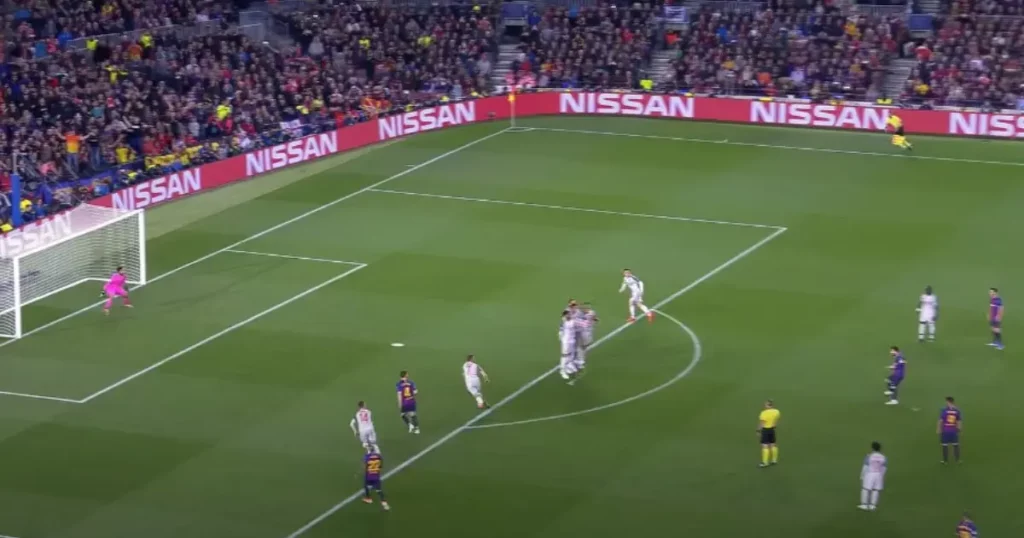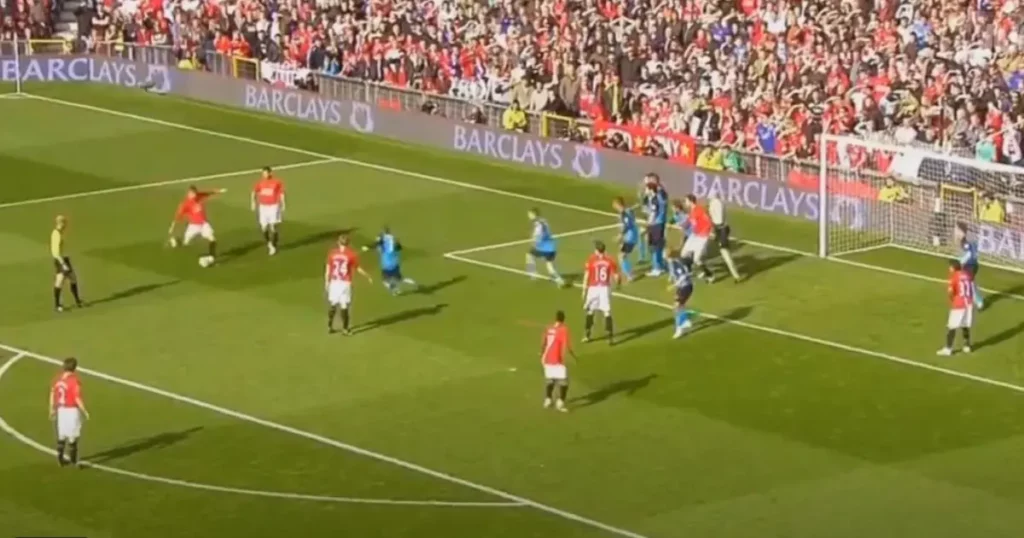Indirect vs direct free kick: Everything you need to know about free kick in soccer
Free kick is an integral part of soccer and one of the favorite ways for the players to score a goal. Most of the attackers always look to put their names on the scoresheet through scoring free kick goals which always attract the eyes of the masses due to the beauty of these goals.
However, many soccer watchers do not know that there are two types of free kicks – Direct free kick and indirect free kick. And, in both ways, players score world-class goals. The rules surrounding these free kicks are not too hard to understand. There are different situations and places in a game where the referee awards a free kick to a team. Here at Sportsdunia, we bring you a detailed analysis of the difference between a direct free kick and an indirect free kick including their rules.
Direct free kick rules

A direct free kick is a situation or a chance for a soccer player to score directly with one strike. When a free kick is awarded after a player is fouled near to the opposition penalty box, that free kick can be considered as a direct free kick chance. In these situations, the players with exquisite shooting accuracy, look to score by striking the ball once.
Basically, when a free kick is converted directly by a player without the help of any of his teammates, it is called a direct free kick. However, it’s not always necessary that the distance between the goalpost and the place of foul occurrence should be close. The beautiful game of football has witnessed a plethora of talents who with the help of their humongous shooting strength and accuracy have scored long-range free kick goals. These strikes are regarded as direct free kicks.
Players like Cristiano Ronaldo, Lionel Messi, David Beckham, and Roberto Carlos have etched their names in soccer history with their sublime direct free kick-taking skills. While stars like Cristiano and Carlos rely on their stunning long-range shooting power, Messi and Beckham rely on their pinpoint accuracy to convert a direct free kick into a mesmerizing goal. There are several other superstars who are maestros in this regard.
Indirect Free Kick rules

There is not much difference between indirect vs direct free kick in soccer. The only thing that separates the two types is that in indirect free kick a player can not score a goal through a direct shot. In this type of free kick, the attacking team must complete at least one pass before converting.
Corner kick is a perfect example of an indirect free kick if the shot taker does not score directly. During a corner, one player from the attacking team delivers a cross into the penalty box of the opponents, and if the ball finds the back of the net through a header or a tap-in, or a deflection, it is an indirect free kick. However, the most important thing to remember in this case is that the ball must be touched by the corner kick taker before it touches any other player. Only then can it be considered as an indirect free kick.
Generally, this free kick is executed from more than 25-30 meters away in a soccer field. When a ball is played through a cross into the danger zone, it must be touched at least once before striking into the net. It does not matter whether the ball touches the teammates or the opponents of the free kick taker.
Reasons behind indirect free kick in soccer
There are plenty of reasons for which indirect free kicks are awarded by the referees in soccer. A series of offenses has been registered in the rulebook of soccer in this regard. Indirect free kicks are very much common in this game as any types of tackles can lead to these set pieces, except any serious offenses.
List of scenarios leading to indirect kick:
- Aggressive display
- Obstructing opponents
- Suspension of play due to any unprecedented situation
- Preventing goalkeeper from starting a play
- Send-off of a player
The most important rule in indirect free kick concerns the goalkeepers. If a goalie collects the ball using their hands after starting the play with his hands before the ball touches another player, then an indirect free kick will be awarded to the opposition inside the penalty box.
It is not the only rule in this matter. If a team deliberately backpass or throws the ball to its goalkeeper before a substantial amount of playtime and the goalie touches the ball with his hands, then also it will lead to a free kick inside the box. The on-field match officials raise their hands vertically above their heads to signal for the indirect kicks.
Reasons behind direct free kick in soccer

The most aggressive fouls lead to direct free kicks in soccer. If the tackles or offenses are serious, then the referees are bound to award direct free kicks. If there is an intentional handball situation, then it requires a direct free kick punishment. However, it is not the only scenario where this type of kick is allowed by the referee. It is followed by a streak of fouls.
List of scenarios leading to direct free kick:
- Dangerous tackle on an opponent
- Kicking an opponent
- Pushing an opponent
- Jumping on an opponent
- Attempting kick or tackle on an opponent
- Spitting on an opponent
- Holding a goal-bound opponent
- Handball
In soccer, there is a debate amongst the soccer pundits and fans across the world with the handball rule. However, despite the complication of this handball foul leading to controversies, the referees, most of the time, show their hands to the spots where the fouls occur for direct free kicks.
The match official uses his hand to direct the spot where the illegal tackle happens. The ball is placed by the free kick taker. Before that, the referee will show in which direction the attacking team will shoot the direct free kick. The only loophole in this free kick in soccer is that the defending team will be awarded a corner kick if the team that takes the direct kick, sends the ball into their own penalty box.
Indirect kick inside penalty box
Indirect free kick inside the penalty box is a rare sight in soccer. But, there are plenty of these instances in history. The soccer fans generally know that only penalties are awarded inside a box. But, in some cases, an indirect free kick is also ruled by the match official. However, a direct free kick can never take place inside the penalty area.
Any offense where two players are not deliberately involved inside the penalty box can result in an indirect kick in soccer. However, there are three or four offenses that can lead to indirect free kicks inside the penalty box. If a goalkeeper collects a deliberate back pass from an outfield teammate with his hands after starting the play having used his hands, then an indirect kick is awarded by the referee. Even, in case of a throw-in, if the goalkeeper uses his hands to catch the ball, it will also result in a free kick in the box. Another rare offense is a goalkeeper executing more than four steps before taking the ball in control inside his penalty area.
FAQs
What determines if a free kick is direct or indirect?
If the free kick taker scores a goal directly and it is allowed by the referee, then it is a direct free kick. Conversely, if the referee disallows the goal scored directly from the free kick, then it is an indirect free kick. Serious offenses, such as a handball or an aggressive foul, can lead to direct free kicks. Otherwise, the referee only awards indirect free kicks.
What are indirect free kicks awarded for?
Indirect kicks are awarded for only on occasions like stopping an attacking opponent, aggressive play, etc.
Can you shoot directly from an indirect free kick?
No, a direct shot can not be taken from an indirect free kick.
Also Read: FC Barcelona 2024 summer transfer window analysis, predicted line-up for 2024-25
